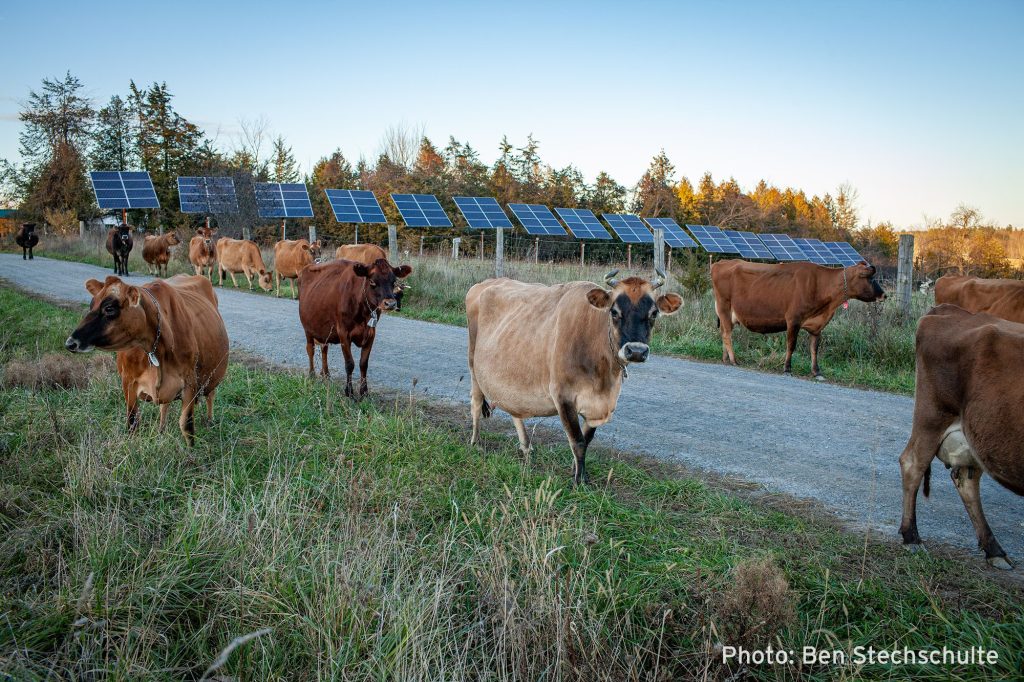By Jess Grant – Conservation Associate
Friday, March 28, 2025
It is apparent that climate change is already affecting the world around us. Storms are more frequent and extreme, drought and wildfires are commonplace, and plant communities and wildlife habitats are shifting. Fortunately, New York passed the Climate Leadership and Community Protection Act (Climate Act) in 2019 to commit to lowering emissions by 85% from 1990 levels by 2050. However, the work is not over to ensure that climate action continues, is proactive, and does not needlessly sacrifice prime agricultural lands or unintentionally promote deforestation.
In an effort to meet the Climate Act goals, renewable energy is getting investments like never before, and the state is on track to achieve 10 gigawatts of distributed solar by 2030. Distributed solar includes panels on rooftops, solar trackers, or community solar projects that are closer to the people using the power, unlike utility scale solar which could be traveling hundreds of miles to reach consumers.
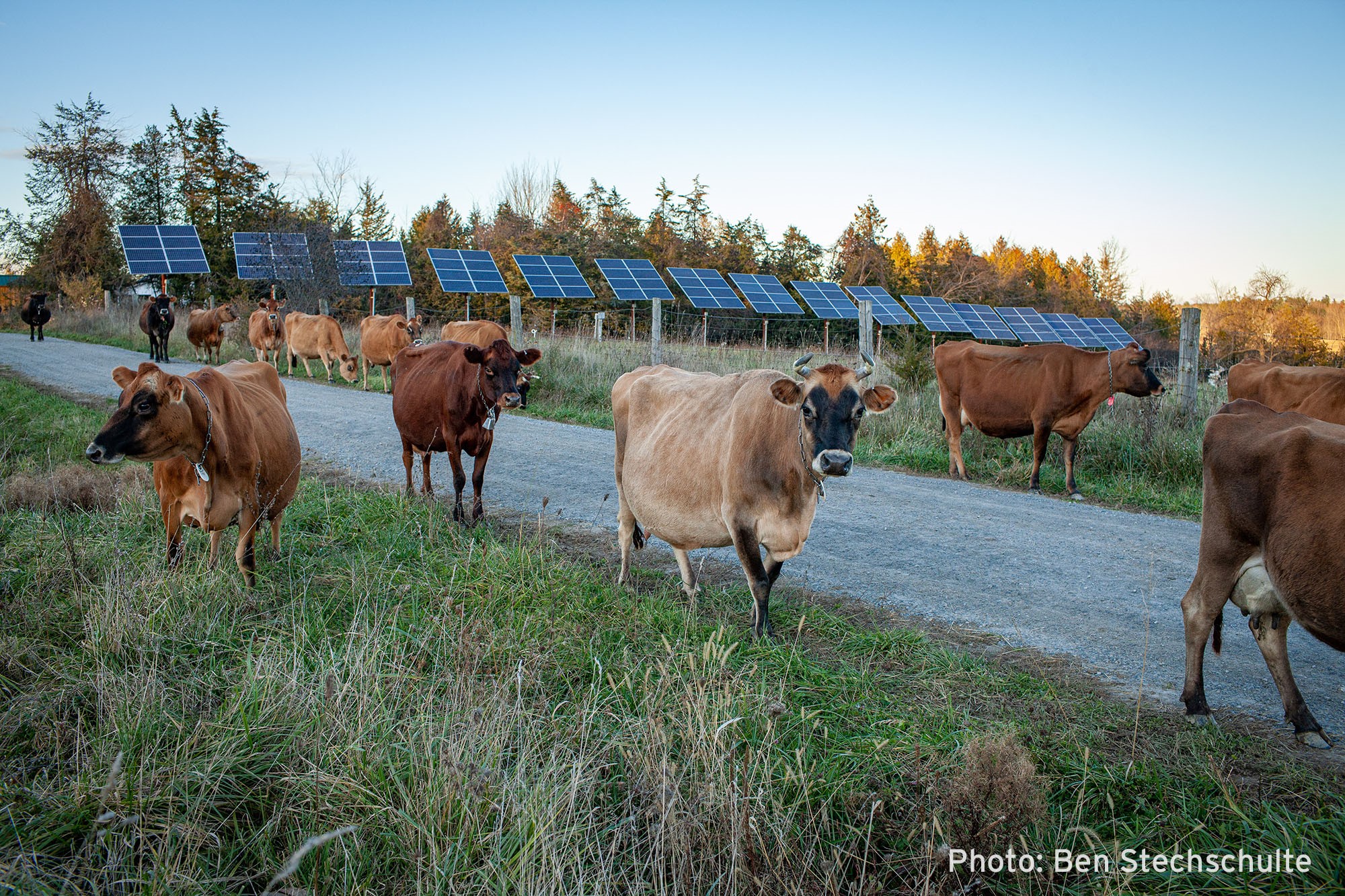 Setting “Sites” on Solar
Setting “Sites” on Solar
Following the adoption of the Climate Act, solar projects in open space have grown, particularly in upstate farmland that are already cleared and relatively flat. The Champlain valley has particularly faced this pressure, hosting 28% of distributed solar (by megawatt) in counties within the Blue Line while counties touching or within the boundary make up only 13% of distributed solar capacities within the state since 2000. This concentration of energy demand and land availability impacts rural areas and farmland. As the cost of farming increases, farmers are faced with difficult decisions for the long-term economic viability of their land and their legacies. On the other hand, large land owners will focus on return on investment, and solar is an increasingly attractive option in some cases.
An Adirondack Park Agency permit is required for for solar projects selling energy off-site, involving over one acre of wetlands, or structures are over 40 feet high, and may be required if within a critical environmental area. Various constraints including terrain, soils, wetlands, presence of threatened and endangered species, grid connectivity, and more influence project feasibility. Luckily, a lot of these constraints are accounted for in the Adirondack Park Agency’s Development in the Park Solar Power Projects.
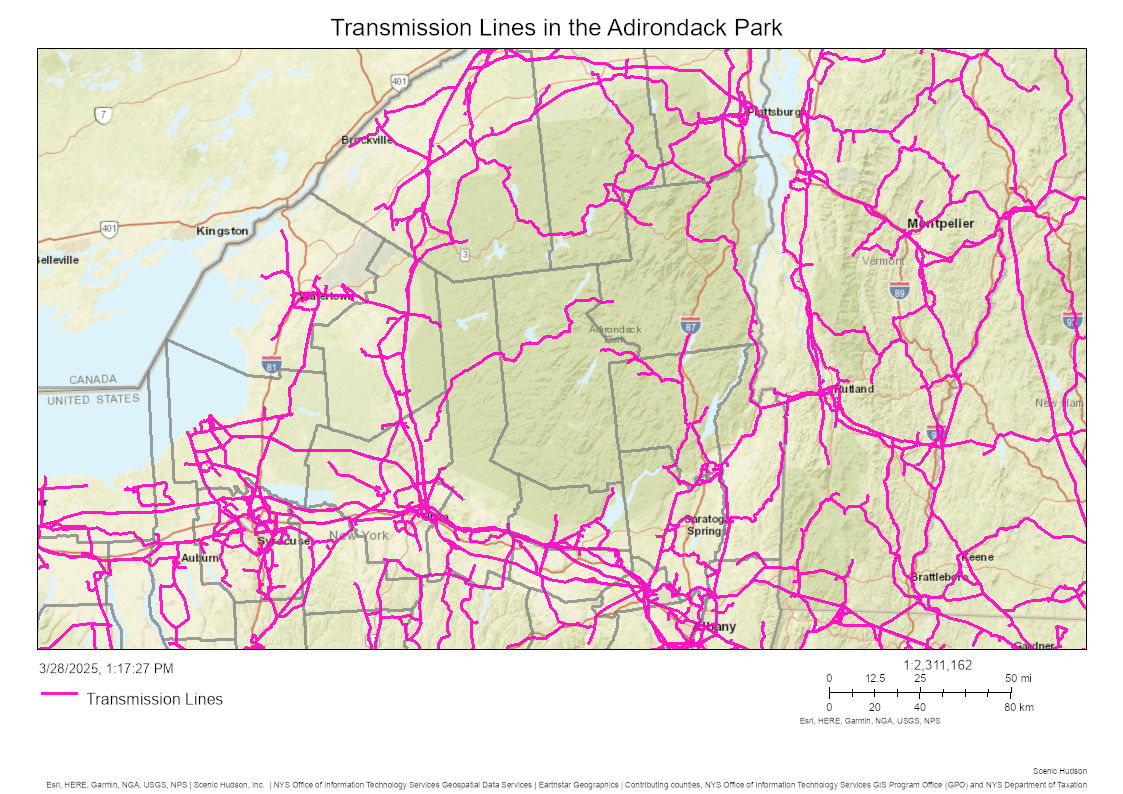 The Adirondack Council fulfills an important role in monitoring and weighing in on solar projects as streamlined processes for decarbonizing New York’s energy system are not always aligned with protecting the ecological integrity of our landscape.
The Adirondack Council fulfills an important role in monitoring and weighing in on solar projects as streamlined processes for decarbonizing New York’s energy system are not always aligned with protecting the ecological integrity of our landscape.
When and Why We Speak Up
There are a number of considerations that the Adirondack Council takes into account when we review solar project proposals from an environmental advocacy lens:
-
The land use classification, characteristics of the land, and proximity to Hamlets with deference to Town authority for in-Hamlet projects;
-
Scale and design of the project, with a focus on projects over 5 megawatts, and whether it benefits the local community or if energy is being sent out of the region;
-
Visual impacts through vegetative screening, setbacks, lighting, and anti-reflective coating on the panels;
-
Retention and improvement of vegetation and native species, including pollinator species or native grasses, trees, and shrubs; and
-
Proposed alternatives that may showcase “no-cut” tree cutting scenarios, fewer panels to reduce impacts, or offer viable agrivoltaic (also known as dual-use or co-utilization) plans by allowing farmland to stay in production alongside the solar development.
These factors help us weigh whether to comment on projects. We also hope to continue to shape New York and Adirondack policies by encouraging solar development in more marginal lands like highway or interstate Right-of-Ways, capped landfills, or reclaimed mines, all of which would repurpose impacted lands and improve our progress on the Climate Act goals.
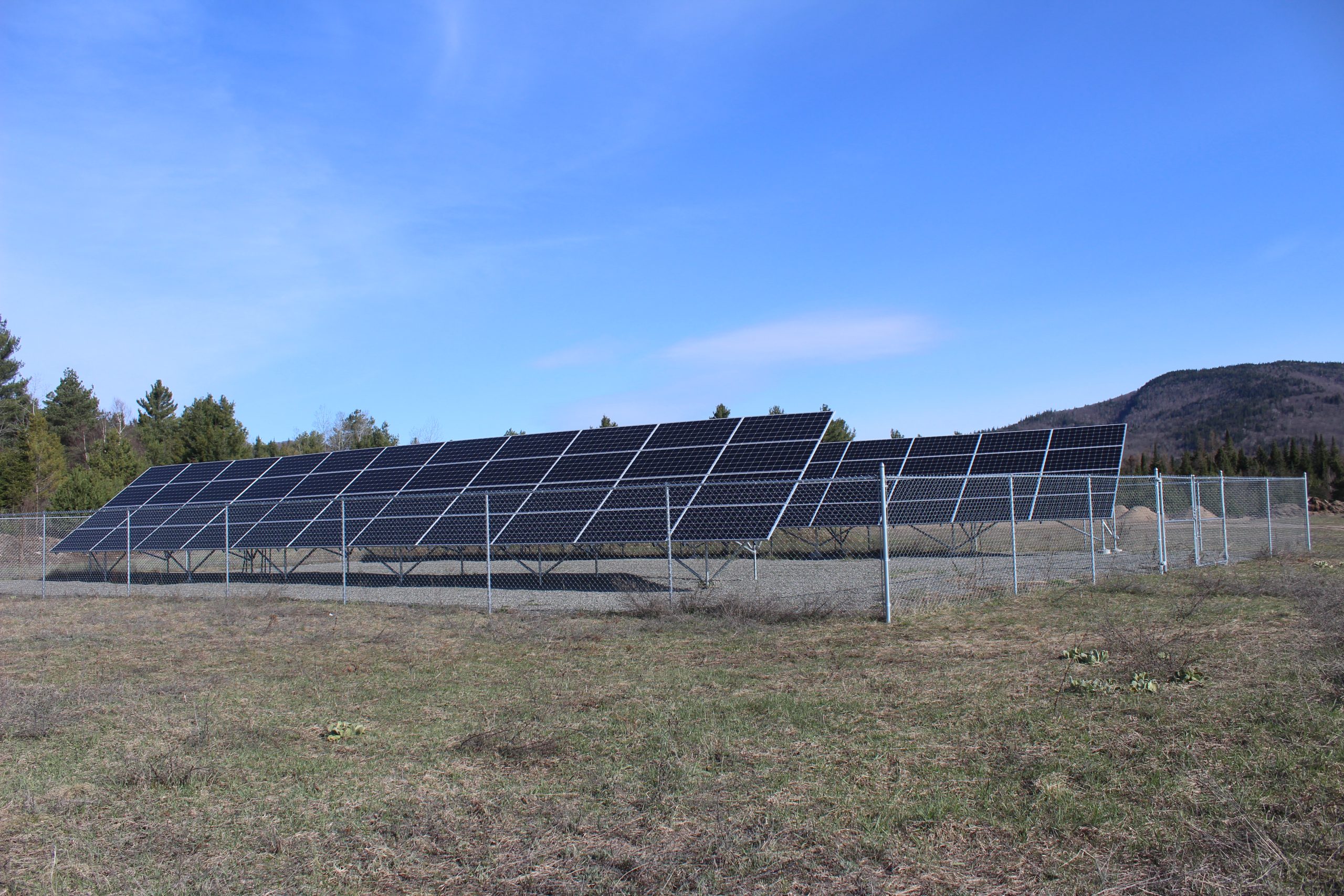 Keep it Cool
Keep it Cool
Decarbonizing our energy system in New York in ecologically sound ways is not an easy task. Even if a project is well-thought out at the site scale, we think at the landscape scale and keep the larger ecological context in mind. Projects larger than 25 megawatts are the jurisdiction of the Office of Renewable Siting and Transmission (ORES). This includes the 40 megawatt Mayfield utility scale solar project which the Council raised concerns over deforestation, visual impacts, and viability of the dual-use plan beyond the five year pilot project. The Council tends to support solar projects that:
-
Keep forests as forests, do not weaken “Forever Wild” protections, and improve carbon sequestration and storage. We support a climate-smart Adirondack Park that is sustainable and does not impinge on the ecological integrity of the Adirondacks.
-
Reduce emissions and are consistent with other land use goals. This includes maximizing energy conservation or promoting practices that keep energy consumption local and reduce local and regional energy demand.
-
Minimize impacts through careful siting and design, particularly for open space, scenic vistas, prime farmland, working forests, wetlands, and habitats for rare, threatened, and endangered species. We prioritize science-based decision-making to determine the most suitable technology, location, and scale for renewable projects, reducing impacts on water, wildlife, vegetation, habitat, soil, and other natural resources. Preferably, small-scale projects should be located near communities and transmission infrastructure, utilizing disturbed, developed, or reclaimed industrial lands.
-
Foster public engagement, transparency, and education in the review process through stakeholder and community information sharing. Projects should improve public knowledge on renewable energy types, benefits, and distribution to stakeholders and policy-makers, and generate community benefits by lowering energy costs through localizing the energy system whenever possible.
You can read our full policy on renewable energy in the Park here.
Successful Models
There have been several gold-standard solar projects within the Park. One such example is the Benson Mines project, a 12 megawatt project in St. Lawrence County which was the state’s first Build-Ready project on a reclaimed mine. Just this month, NYSERDA announced that CleanCapital was selected as the developer for the 20-year contract to power up to 3,000 homes.
Another great example near the Adirondacks is the 6 megawatt community solar project at the Ciba-Geigy Property in Queensbury. The brownfield site has housed numerous industries, but with its south facing slope, it can serve a new development purpose by creating clean power for residents close to the site and get a discounted electric rate.
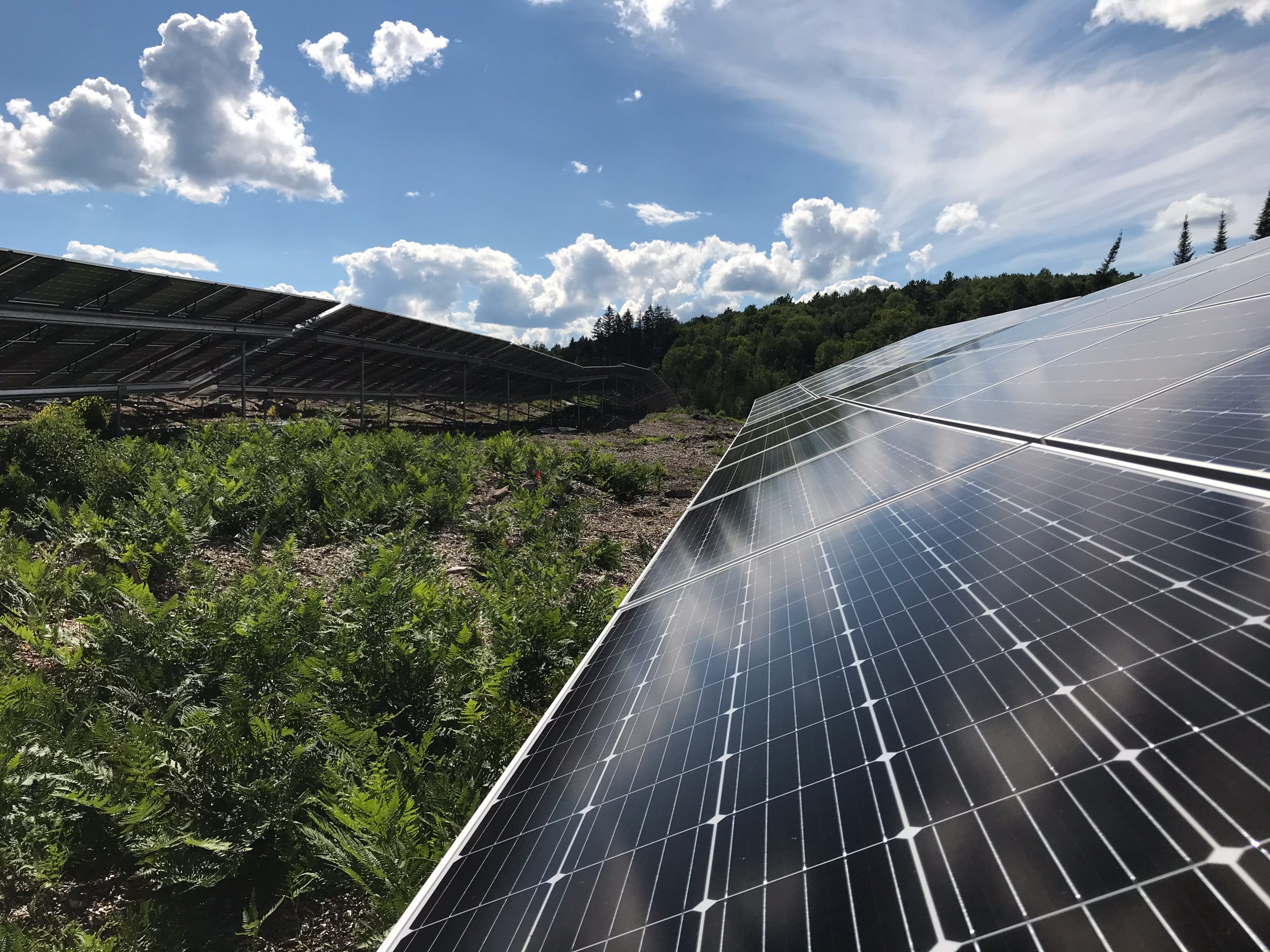 An Independent Eye on Solar
An Independent Eye on Solar
No two solar projects are alike, and it is important to review each with a keen eye, down to checking the species list for the replanting plan. As advocates, we have a key role for remaining actively engaged in the shift to clean energy in New York. The transition is essential for addressing climate change, and we can do so in a manner that keeps our forests sequestering carbon, minimizes impacts to our natural resources, and improves community understanding of projects.
Looking for more ways to get involved with the Council?

